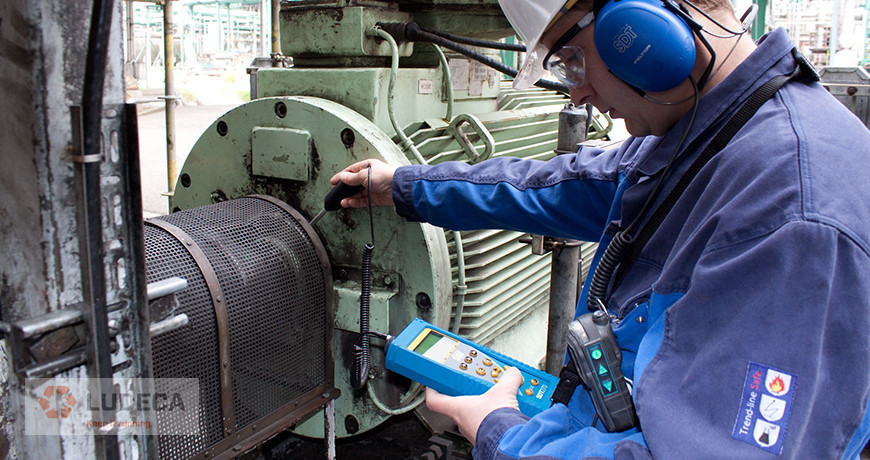
Damage inside of a rolling element bearing begins with sub-surface fatigue and results in a detectable sound signal that occurs in the ultrasonic frequency range. Ultrasound can be used to detect these Stage 1 bearing defects which would not be visible looking at typical vibration spectrum. If you listen to the sound that is being produced from a bearing with a Stage 1 defect, it would sound relatively smooth and sound similar to a bearing that was in need of lubrication. The difference between the two is that after adding lubricant to the bearing with the Stage 1 defect, the amplitude of the sound would not decrease, whereas with a bearing requiring lubrication the sound level should reduce and return to baseline.
As the wear progresses and the sub-surface cracks become larger, eventually this damage enters Stage 2 and the cracks become a spall. The sound of each rolling element passing over a spall on the outer race of the bearing is easy to hear, and since the spacing of the rolling elements is consistent, the sound produced is consistent and repetitive.
Ultrasound is an especially good tool for detecting bearing problems on slow-speed machines. However, there are some common misconceptions about this and how it is done. Just because you are using ultrasound over a conventional vibration analysis setup does not change the rules of signal processing.
The same rules still apply using both.
The cage frequency or fundamental train frequency (FTF) for most rolling element bearings is usually somewhere around 30% – 40% of the turning shaft frequency. That means that the shaft must rotate three or four times before the cage has made one revolution. To be able to resolve the cage frequency at least ten to twelve revolutions of the shaft are required, and in slow speed applications this might require the user to collect data for several minutes in order to determine the health of the bearing’s cage.
Another consideration in monitoring slow speed machines is that because of their slow speeds they generate low amounts of centrifugal force and vibration sensors are designed to measure force. Thus, the low levels of centrifugal force coupled with low amplitude signals coming from the Stage 1 defect make it difficult for vibration sensors to easily identify Stage 1 bearing defects.
The ultrasonic sensor on the other hand doesn’t have this problem because it’s not designed to measure centrifugal force. The ultrasound sensor only measures the sound levels in within the bearing assembly and has been used successfully to detect bearing defects on machines operating as slowly as 1 rpm.
Download our 4 Stages Bearing Failures infographic for a basic reference guide to understanding the stages of bearing failures. Perfect to hang at your facility too!
Filed under:
Ultrasound by Dave Leach CRL CMRT CMRP
